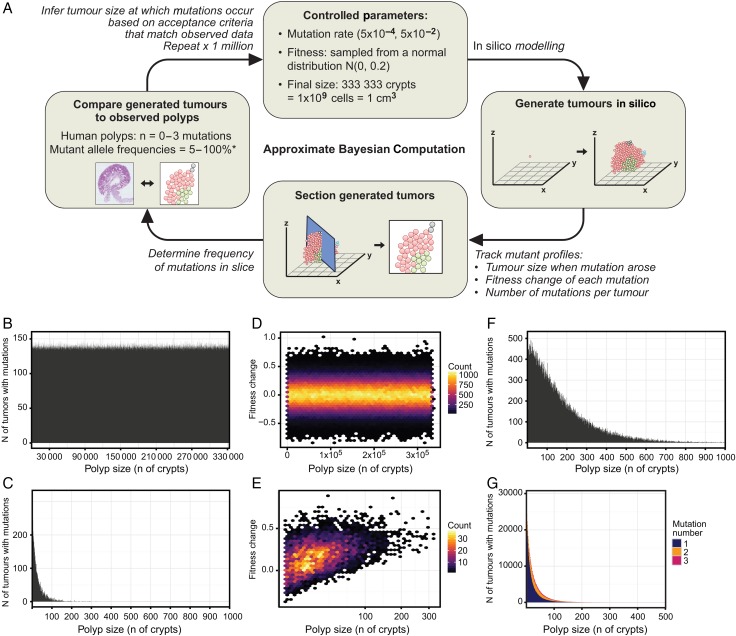Figure 4.
Statistical inference predicts that detectable mutations arise early. (A) The Approximate Bayesian Computation (ABC) framework is shown. (B) Prior distribution of all mutations acquired by in silico tumours demonstrates that mutations can occur at any size in the model. (C) Posterior distribution of mutations that fit acceptance criteria (≥10% mutant allele frequency) and the size of the tumour when that mutation arose are shown. (D) Prior distribution of the fitness change of all mutations acquired by in silico tumours demonstrates that fitness can be positive, neutral or negative. (E) Posterior distribution of the fitness change conferred by mutations that fit acceptance criteria and the size of the tumour when that mutation arose are shown. (F) Posterior distribution of mutations that fit acceptance criteria and the size of the tumour when that mutation arose when fitness is modelled as strong positive selection demonstrate that even tumour-promoting mutations still must arise when the tumour is small. (G) Posterior distribution of mutations that fit acceptance criteria and the size of the tumour when that mutation arose in which mutation rate was increased to model multiple private mutations are shown.

